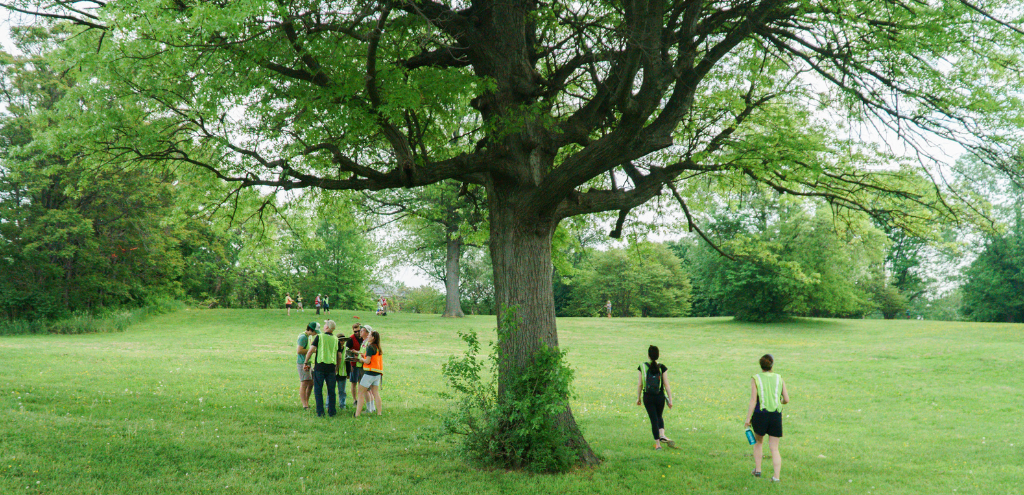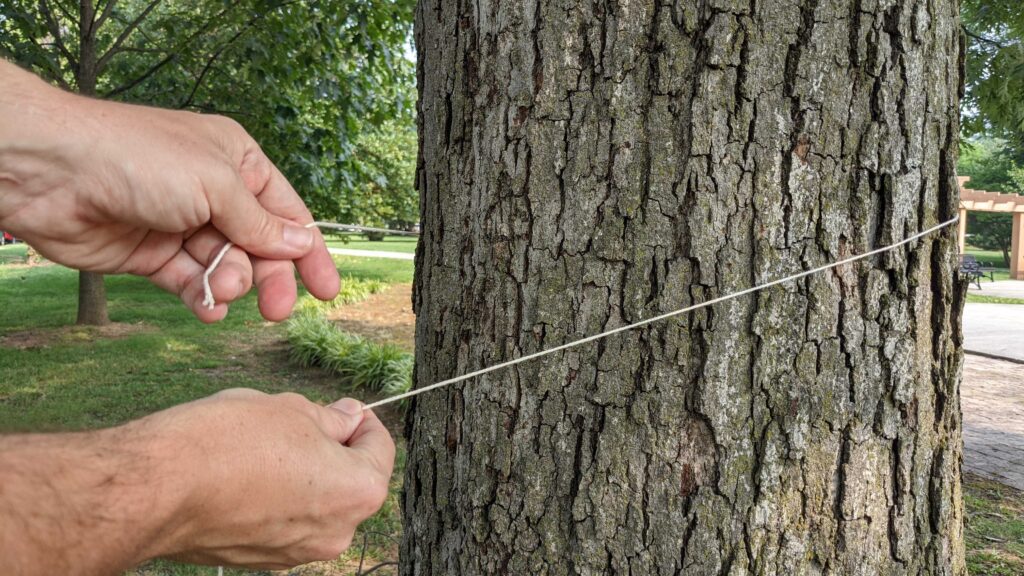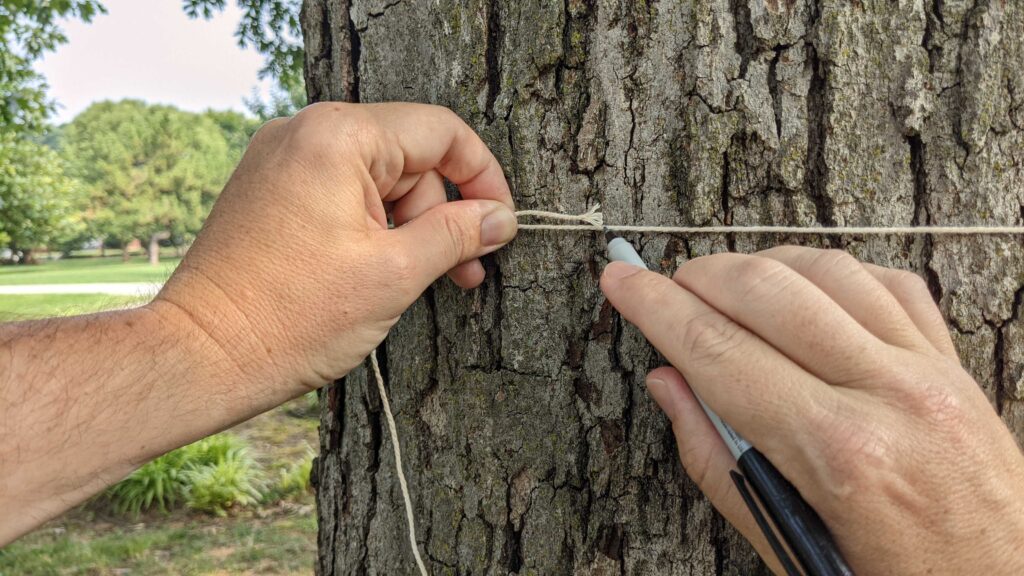THE LEAFLET

Let’s Find the Largest Tree in DC
 People often ask us if we know where to find the largest, or oldest tree in DC – and while there isn’t a whole lot of updated data and information on the topic, we’d like to provide some answers and hopefully get some help from you, our citizen scientists out in the field. So, grab your measuring tape and join in the search for the largest tree in DC! Not only will you be contributing to important research, but you’ll also get to spend time outdoors and appreciate the beauty of nature in the nation’s capital.
People often ask us if we know where to find the largest, or oldest tree in DC – and while there isn’t a whole lot of updated data and information on the topic, we’d like to provide some answers and hopefully get some help from you, our citizen scientists out in the field. So, grab your measuring tape and join in the search for the largest tree in DC! Not only will you be contributing to important research, but you’ll also get to spend time outdoors and appreciate the beauty of nature in the nation’s capital.
WHAT WE KNOW
In 2006, This White Oak was the largest tree in DC in the 2800 block of Northampton St, NW in a private yard. But considering that this is a 17-year-old article about an already old tree, it may be long gone or outshined by a now larger tree.
In 2020, American Forests released its Champion Trees National Register, which is a compilation of America’s largest trees. The Champion Trees in the National Register are the biggest of their species in the country as reported to American Forests in that year. Anyone can use it to see the vast diversity of tree species across the country. DC has its very own Champion Chestnut Oak in Battery Kemble Park. It stands a whopping 105 feet in height and has a circumference of 276 inches (23 feet!), making it the largest tree of its species in the country.
More recently, we asked the folks on our GIS mapping team to put together a “Large Trees” map. This map contains the location of 109 trees suspected of being the largest trees in DC. It’s created from three datasets – the first is the District Urban Forestry Division’s (UFD) street trees dataset. UFD arborists capture the location of all the District’s street trees, as well as other identifying information about each tree like DBH (Diameter at breast height), pest damage, and care recommendations that promote good management of DC’s urban forest. Trees with the largest DBH values were included on the map.
The second dataset contains trees on privately owned land derived from a 2018 LiDAR capture. Based on the height and spread of a tree’s crown when viewed from above, scientists estimate the DBH of each tree. Trees with the highest estimated DBH values are included on the map. The last data source is from the Casey Trees Park Inventory dataset. Over 21,000 trees have been inventoried across the city, and we have included the largest of those on this map.
HOW YOU CAN HELP
Even with all these resources, the answer to which is the “largest” tree is still unknown. That’s why we’re asking for your help! Join the quest to uncover the majestic giants hidden within the urban landscape of Washington, DC! We call upon all nature enthusiasts, arborists, and curious individuals to embark on an exciting adventure to find and celebrate the largest tree in our nation’s capital.
Imagine standing in awe before the towering crown and sprawling branches of a magnificent arboreal wonder. By participating in this search, you not only contribute to our understanding of DC’s rich biodiversity but also become a steward of these living monuments, ensuring their preservation for generations to come.
Together, let us explore the city’s parks, neighborhoods, and green spaces, unraveling the secrets of the urban forest and embracing the sheer beauty of nature thriving amidst the bustling cityscape. Unleash your inner explorer and be part of an extraordinary journey to find the largest tree in DC!
And to make it even more exciting – the person who submits the largest tree will receive a $100 gift certificate to our store (≥100” = heritage tree) and $44 for runner up (44″ to 99.9″ is a special tree)! We’ll be accepting submissions until July 28th, and Casey Trees staff will verify the winning trees’ measurements.
HOW TO MEASURE
Measuring the Diameter at Breast Height (DBH) of a tree is a valuable technique for assessing tree size and growth. While professional tools like calipers or diameter tapes are commonly used, you can still accurately measure a tree’s DBH with readily available items and a bit of ingenuity. Use this as your do-it-yourself guide to measure a tree’s DBH without professional tools, allowing you to contribute to citizen science initiatives, personal projects, or simply satisfy your curiosity about the natural world.
DBH can be measured with a flexible measuring tape, or with a piece of string and a standard measuring tape or ruler.
- Wrap your string around the tree trunk at 4.5 feet from the ground.
- Mark or cut the circumference on the string.
- Measure the length of string to get the circumference of the tree.
With a string:
- With measuring tape, measure 4.5 feet up the trunk of the tree from the ground. Use a thumbtack to mark the height on the tree or hold it securely.
- Wrap your string around the tree trunk at 4.5 feet from the ground. Make sure the string is straight and tight around the trunk, and mark or cut the circumference on the string.
- Measure the length of string to get the circumference of the tree.
- Convert the circumference measurement to diameter by dividing the circumference by pi (3.14).
For more information on how to measure a tree’s DBH please refer to this video shared by Portland’s Parks and Recreation Department. Once you’ve measured and taken a picture with the tree, you can submit your data to this form – and once we’ve collected all your responses, we’ll highlight the winning tree and citizen scientist! Remember, accurate measurements and recording data are key to contributing meaningfully to our understanding of the natural world. So, grab your measuring tape, explore the outdoors, and uncover the wonders of tree measurement using your own DIY techniques.


